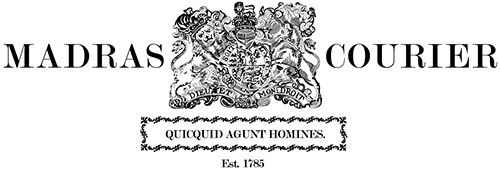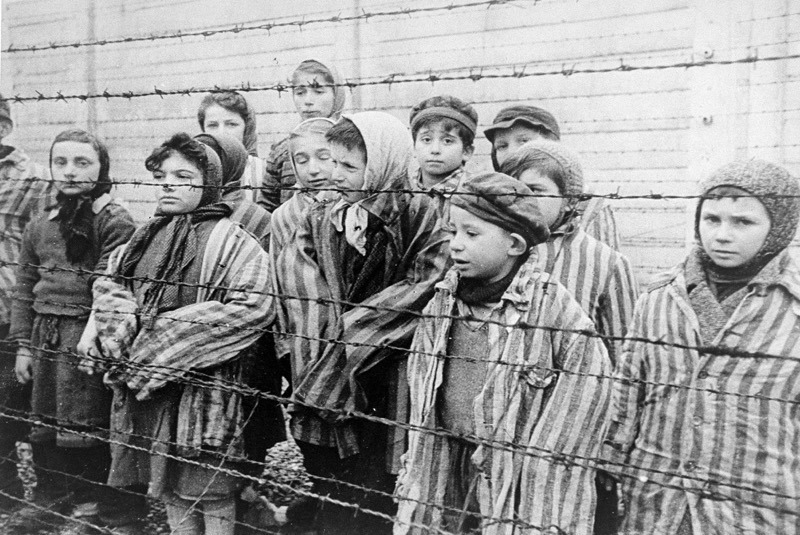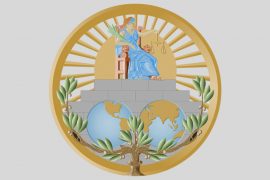Metaphors have been an intrinsic part of human cognition and expression since the birth of civilisations and the formation of languages in all cultures. While metaphors have accentuated some of the most exquisite poetry and prose over millennia, they were employed deftly and premeditatedly to dehumanise and debase fellow human beings.
Dehumanisation is the agent provocateur which foments an array of human atrocities — genocides, wars, collective punishments, racism, sociopolitical polarisation and ostracisation of communities, hate speech — and violent crimes against humanity. By definition, dehumanisation is metaphorisation aimed at the reduction of human status to subhumans, animals, objects, pathogens and substances.
It is targeted at religious communities, ethnic groups or individuals within the dehumanised categories. This malady takes the form of engineered or manufactured stigmatisation for realpolitik ends and serves plausible explanations within the corridors of power to justify the extermination and marginalisation of targeted groups.
Dehumanisation has its origins in antiquity, from ancient Greece to the Roman Empire, where enslaved people were considered non-human property with no legal rights. They were subjected to untold miseries and discrimination, mainly enslaved women, who suffered perverse sexual exploitation in harems, their bodies commodified for satiating the whimsical pleasures of profligate kings and elites.
If dehumanisation in ancient and medieval kingdoms was the natural outworking of prevalent cultural ethos and social mores of mythical social hierarchies and divine right of kings, it became complicated in modern history with the advent of democracies and high moral consciousness of justice, equality, and the rule of law. Dehumanisers had to invent tools of moral disengagement to perpetrate inhuman acts of violence against fellow human beings so that they may appear sanctimonious, professing virtues and hallowed ideals of humanity. Consequently, dehumanisation invariably starts with language.
In Nazi Germany under fascist Adolf Hitler, Jews were targeted for extermination under the infamous dossier, “The Final Solution of the Jewish Problem.” In the form of animalistic dehumanisation, Nazi propaganda described Jews as ‘the tapeworm in the human organism,’ while the state documents referred to them as ‘bacillus carriers of the plagues.’
Joseph Goebbels, the Nazi propaganda chief, believed and exhorted that ‘Jews have to be killed off as rats.’ Similar regressive, inflammatory language and animal classification of rivals were rampant in Joseph Stalin’s Soviet Union.
Stalin described political dissidents and people he considered enemies as ‘bloodsuckers,’ ‘vampires’, and ‘spiders.’ His Chief Procurator, Andrej Vishinsky, further denigrated them by addressing them variedly as ‘dogs,’ ‘reptiles,’ ‘predatory beasts,’ ‘vermin,’ and ‘lice.’ This dehumanising rhetoric, featuring animal names, euphemistically warranted immediate purging and eradication of the menace.
Ideologically, the Nazis viewed Jews, Roma, Sinti, Slavs and the disabled (who were massacred by the Aktion T4 program) as sub-human and biologically inferior under the German moniker ‘Untermenschen.’ The Nazi party subscribed to the pseudo-scientific theory of Social Darwinism, exemplified by the Aryan Supremacy Theory.
On the contrary, Stalin and his Bolshevik Party repudiated race categorisation and the ‘biological approach’ of the Nazis and their genocides and Siberian Gulags, which were directed at conspirators, rebels and intellectuals deemed as ‘socially harmful elements.’ Though the brutal regimes of Hitler and Stalin achieved similar results — the Holocaust and The Great Purge — with identical language that dehumanised people, the ideological intent was at variance.
But dehumanisation doesn’t occur in a void devoid of a history of social relationships and interactions between belligerent ethnic groups. On 6 April 1994, when two surface-to-air missiles assassinated Rwandan President Juvenal Habyarimana, the Hutu leaders instantly called for the murder of their Tutsi neighbours.
In villages where cordial relations existed between Hutu and Tutsi, they were unbeknownst to the outbreak of violence in the Rwandan capital and often fled together into the mountains for safety. Many scholars argue that dehumanising rhetoric on Radio Television Libre des Milles Collines (RTLM) facilitated the ensuing genocide, but nothing is further from the truth. Though dehumanising language was rife with words like ‘cockroaches’ and ‘snakes,’ depicting Tutsis aired by the Radio, it was the pre-existing relationships that eventually led the Hutus to embark on a murderous rampage of the Tutsis.
It is interesting to note that in the ensuing genocide that killed more than 800,000 civilians — majority Tutsis and moderate Hutus — only ten per cent of the Hutu population participated in the massacre. Only with the arrival of the Rwandan military and the paramilitary Interahamwe did the Hutu population, succumbing to vertical and intragroup social pressure from the state actors, start killing Tutsis.
It was, however, easier for Hutus to slaughter their Tutsi neighbours where rivalries, animosities and support for extremist groups pre-existed. The pre-existing social integration of communities accounted for the ‘Schindler Jews,’where Oskar Schindler, a wealthy German industrialist and member of the Nazi party, saved the lives of 1200 Jewish employees in his factories. The Nazi party found avid supporters of anti-semitism, where social cohesion between Germans and Jews were minimal and Nazi indoctrination was at its zenith.
Most forms of dehumanisation, whether it is animalistic or demonic or mechanistic – propaganda stating that human nature is absent in the dehumanised – state institutions play a critical role covertly or overtly. A quintessential case study is the ongoing Israel-Palestinian conflict, with no peaceful resolution in sight as both warring states have institutionalised terrorism.
If Hamas, the ‘revolutionary’ outfit of the Palestinian Intifada, has an explicit charter for Jewish obliteration, the successive hardliner governments of Israel have engaged in illegal occupation and settlements, committed atrocities against Palestinians and caged them in the world’s largest open prison in Gaza, under institutional connivance. The erstwhile Israeli Defence Minister, Yoav Gallant, has controversially remarked that Israel is ‘fighting human animals’ post-October 7 terrorist strikes by Hamas.
The disproportionate warfare adopted by Israel, under the pretext of eliminating Hamas, has hitherto butchered more than 46,000 Gazans in one of the most gruesome and reckless ethnic cleansing incidents of modern history.
Palestinian narratives of the Nakba and their legitimate resistance to reclaiming their homeland are drowned in the dehumanising and dehistorisation narrative of the Israelis and their global sympathiser media apparatus; the United States, Great Britain, and other Western powers ruefully attest it. Edward Said, the Palestinian-American academic who was one of the leading figures of the Palestinian Resistance, rightly observed:
The power to narrate, or to block other narratives from forming and emerging, is very important to culture and imperialism, and constitutes one of the main connections between them.
Social media exacerbate dehumanisation through a lack of content moderation. The recommendation and engagement algorithms combined with an attention-capture business model trap users into information filter bubbles and selective exposure.
Unfettered dehumanisation in the virtual world, with the creation of echo chambers and sub-cultures inciting violence and hatred against the dehumanised, has become rampant and has become the hallmark of 21st-century digital media production and consumption.
Facebook feeds for Palestinians and Israelis are entirely different. The culpability of Facebook in the ethnic cleansing of Rohingya Muslims in Myanmar and fanning social unrest in Northern Ethiopia is unmistakable.
The drumbeat of dehumanising language always precedes genocides and creates self-mutating forms of hatred and mindless violence. Ottoman Turks classified Armenians as ‘dangerous microbes,’ leading up to the Armenian Genocide, which the Turkish government vehemently denies to this day, drawing parallels to the Holocaust denials.
The black African Darfurians were often derided as ‘monkeys,’ ‘slaves,’ and ‘dogs’ by the white Arab population, and such systemic racist and protracted dehumanisation culminated in the Darfur Genocide (2003-2005), clinically executed by a nomadic Arab militia, the Janjaweed.
Identity politics and demonisation of the Muslim Bosniaks by the Christian Orthodox Serbs reigned supreme in the Srebrenica massacre of 8000 Bosnian Muslims in July 1995. Indoctrination of the local Serbian population by the far-right political fringe enabled ordinary men to commit unspeakable and heinous acts of barbarism and savagery against their Caucasian stock, religion being the only ‘othering’ factor.
The officially secular Peoples Republic of China has indiscriminately detained more than a million Muslim Uyghurs, euphemistically termed as re-education. The Chinese government is cracking down on ‘terrorism driven by religious extremism’ in the western province of Xinjiang, populated predominantly by Muslim Uyghurs.
Painted murals in the old Silk Road district of Kashgar — where 90 per cent of its inhabitants are Uighurs — are replete with dehumanising images; a man with a broom is sweeping off a pile of tiny Uyghurs off the street, and a road roller flattens another group.
The rebellious Uyghurs are invariably painted black and puny in stature. Beijing equates Uyghurs to terrorists and exhorts to drive them off the streets like rats. The Chinese President Xi Jinping, conforming to the dehumanising language of pathogenization against the target groups, has called Uyghurs an insidious ‘virus.’
In the Islamic world, centuries-old sectarian bad blood between the Sunni and the Shia has found its ugliest expression in the ongoing conflict in Syria that began in the ides of March in 2011. The Shiite Bashar al-Assad’s regime was consistently barraged by Sunni dominant nations using a dehumanisation language of vilification. Shias were denounced by various derogatory terms, ‘nusayari,’ ‘rafidha,’ ‘majus,’ ‘safawi,’ ‘Hizb-al-Lat,’ and ‘Hizb-al-Shaytan.’
Shias reciprocate with similar defamatory jargon against the Sunnis, like ‘nasabi,’ ‘takfiri,’ ‘ummayad,’ and ‘wahhabi.’ This deprecatory rhetoric from both belligerent sects is accused of destroying Islamic tenets that only deserve collective punishment and death.
Similarly, Ahmadiyya Muslims – a minority sect – in Pakistan are discriminated against and persecuted by the Sunni majority, condemning them of the sin of heresy and of not accepting Prophet Muhammed as the last messenger of Allah. They are regarded as ‘non-Muslims’ and often derided in Pakistan by religious slurs like ‘Qadiani’ and ‘Mirzai.’
Three eminent academicians from Ivy League universities—Northwestern Kellog, MIT, and Harvard—have conducted a social experiment on a control group of 201 Americans recruited through Amazon’s Mechanical Turk. The participants were given the Ascent of Man diagram on a computer depicting thirteen nationalities or ethnic and religious groups.
Ascent Of Man silhouettes illustrate the evolution of Man from the primitive, stooped quadruped to the advanced and civilised Homo Sapiens, the ‘full man.’ The objective of the study was to ascertain the degree and willingness of the participants to dehumanise other races and communities.
The rankings of the participants in the 0-100 numerically scaled diagram, representing the evolutionary journey of different races, were collated with revelatory findings by the researchers. The group ranked Europeans and Americans first at 91.9 per cent and 91.5 per cent, respectively.
Swiss, Japanese, Austrians, Australians, Icelanders and French came second, with scores hovering around 90 per cent. Chinese were ranked at 88.4 per cent, South Koreans at 86.9 per cent, Mexican immigrants at 83.7 per cent, Arabs at 80.9 per cent and Muslims glaringly lower at 77.6 per cent.
The study concluded that with a conducive environment and malignant incentives for moral immunity, people were highly willing to dehumanise others. The study also alluded to the growing Islamophobia in the Western world.
The United States, touted as the land of the brave and home of the free, has its ignominious share of vilification and demonisation of communities that culminated in massacres, social exclusions and exiles. The chattel enslavement of indentured African blacks between 1776 and 1865, the historical stain of horrific genocides of around 10 million Native Indians since 1492, the internment of 120,000 Japanese Americans in US camps post Pearl Harbor attacks, the infamous Tuskegee Airmen experiments on 600 black men from 1932 – 1972, forced sterilisation of 60,000impoverished women conducted in 32 states by Eugenics Board from 1932-’66 and majority being poor black women, approximately 135,000 migrant children – from El Salvador, Honduras, Guatemala and Mexico — held in detention centres across the US and the ruthless murder of black African-American George Floyd by a white police officer — all stems from a long history of dehumanisation.
An assiduous reader of US history from the arrival of Christopher Columbus in 1492 could empirically infer that the American white settler societies were built, brick by brick, on the horrendous crimes of murder and displacement, violence and bloodshed.
On 17 July 2019, then-incumbent President Donald Trump, known for his incendiary remarks, tweeted that Baltimore was ‘a disgusting, rat and rodent-infected mess’ and ‘no human being would want to live there’ inciting abominable and revolting sentiments and animalistic caricaturisation.
The Baltimore Sun, the largest general circulation newspaper in Maryland, retaliated against Trump with an editorial headlined:
It is better to have a few rats than to be one.
Human beings are a peculiar race. Concupiscence and pugnacity are built into their being, and they have a penchant for self-destruction. Ironically, despite the stellar scientific and technological advancements that have made the world a better place, the foundational principle of achieving what is conveniently forgotten is the realisation and preservation of shared humanity.
Dehumanisation not only morally excludes the dehumanised but also the dehumaniser, eventually, into a trap of cognitive dissonance and moral quandary. Living with seared consciences in mental prisons is torture that outweighs the agony of the victims. Dehumanisation is ignorance. This ignorance is best summarised in the metaphorical poem Dover Beach by Matthew Arnold, and its ending lines best encapsulate the human drama,
Ah, love, let us be true
To one another! For the world, which seems
To lie before us like a land of dreams,
So various, so beautiful, so new,
Hath really neither joy, nor love, nor light,
Nor certitude, nor peace, nor help for pain;
And we are here as on a darkling plain
Swept with confused alarms of struggle and flight,
Where ignorant armies clash by night.
-30-
Copyright©Madras Courier, All Rights Reserved. You may share using our article tools. Please don't cut articles from madrascourier.com and redistribute by email, post to the web, mobile phone or social media.Please send in your feed back and comments to [email protected]











